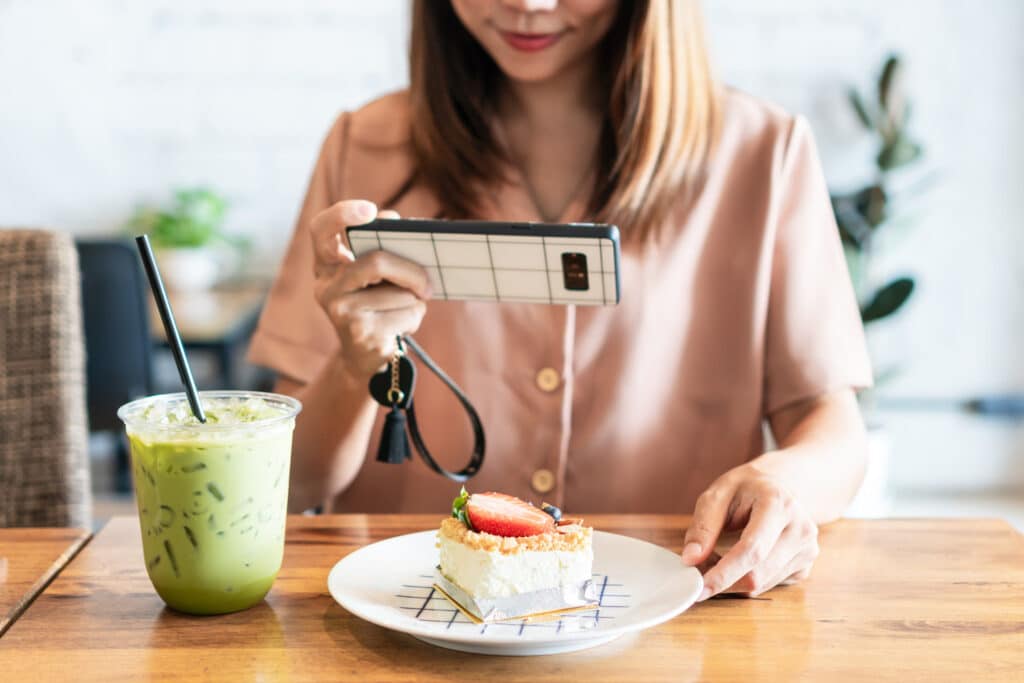In today’s digital age, it’s no secret that the internet plays a significant role in the lives of our children. From online gaming to social media, the online world has become a virtual playground where kids interact, learn, and create. But have you ever wondered about the content they encounter online? Or what they are contributing to the digital universe?
In this article we’ll explore the world of user-generated content, and how it shapes our children’s online experiences.

What is User Generated Content?
User generated content, also known as UGC, refers to any content that is created and shared by individuals who are not professional content creators.
User Generated Content Examples
UGC comes in many forms, including text, images, videos, reviews, and more. Below are some examples of user generated content to help you better understand what it is.
- Social media posts: When individuals share personal photos, thoughts, or experiences on social media platforms like Instagram, TikTok, and Snapchat, they are creating user generated content.
- Blogs and personal websites: Bloggers and website owners who create and publish content independently fall into the UGC category. They might share their expertise, insights, and experiences on different topics.
- YouTube videos: UGC is at the heart of YouTube. Anyone can create and upload videos— from unboxing a new product, to a makeup tutorial, YouTube has it all.
- Forums and communities: Websites like Reddit or Quora allow users to ask questions, share their opinions, and engage in discussions for all to see.
- Product or service reviews: Online reviews on platforms like Amazon, TripAdvisor, or Yelp, are classic examples of UGC.

The Power of UGC
User generated content is often valued for its authenticity. Since it’s created by real people expressing their genuine opinions, it resonates more with audiences. In fact, one study reports 93% of marketers agree that consumers trust content created by customers more than content created by brands.
UGC can foster a sense of community by allowing like-minded individuals to connect and engage with one another. It can also provide exposure to a variety of perspectives, opening kids up to new ideas.

The Downside of UGC
While there are many benefits to content created by users, especially for brand awareness, brand loyalty, and marketing campaigns, it also comes with certain challenges and concerns.
The biggest problem is the potential to encounter bad content. This encompasses many aspects, including content that is inaccurate, biased, offensive, or inappropriate.
Since anyone can create content on platforms such as X (formerly known as Twitter), inaccurate information can run rampant. One study found that tweets containing fake news are 70% more likely to be retweeted than true ones.
UGC platforms can sometimes become breeding grounds for cyberbullying. 59% of U.S. teens have reported being bullied online. The ability to target an individual in such a public environment allows anyone in the world to participate in the harassment.
With the recent rise in popularity of Artificial Intelligence (AI) powered tools such deep fakes or the Lensa app, anyone can create pornography featuring an innocent bystander. There’s currently an investigation underway in a New Jersey high school after pornographic images were created of classmates, and shared through group messages.
The technology we have today is amazing, and has bettered the world in many ways. However, when people decide to use it to create atrocious content, it can be discouraging and scary to allow our children to go anywhere near it. As parents, there’s a lot we can do to protect our children. We’ll discuss this further in the article.
Apps and User Generated Content
Many apps are created with fun and productivity in mind. But when these apps allow users to create their own content it can be challenging for the app developers to monitor it all.
The existence of consumer generated content doesn’t automatically mean an app is unsafe. In fact, with the release of our Gabb Phone 3 Pro, parents have the ability to add third party apps to their child’s phone, including many that allow UGC.
Each app on the list has been thoroughly reviewed by Gabb to identify potential dangers. Check out our app guide to read up on what to expect from each app we allow on the Gabb Phone 3 Pro so you can make informed decisions that make sense for your child.

Keeping Our Children Safe
Let’s face it, the internet is not going anywhere. Kids rely on it for school and assignments. While it’s impossible to completely eliminate all risks, parents can take several steps to help protect children and create a safer online environment for them.
Regular conversation
Start by having open and honest conversations with your kids about internet safety. We’re big proponents of teaching them tech in steps—a gradual introduction to technology based on a child’s age, maturity, and needs. Younger children may need more strict supervision, while older kids can be granted more independence with time and content limits.
Digital skill building
Help your children develop critical thinking skills to evaluate the content they encounter. Teach them to recognize and report any disturbing or inappropriate content they come across.
Teach your kids about responsible content creation and posting. Anything shared online should be honest and respectful, just as in real life. Stress the importance of respecting others’ privacy and opinions. We don’t all have to agree to get along and be kind.
What are your thoughts on user generated content? Do you think it’s useful or dangerous? Share your thoughts in the comments.







Success!
Your comment has been submitted for review! We will notify you when it has been approved and posted!
Thank you!